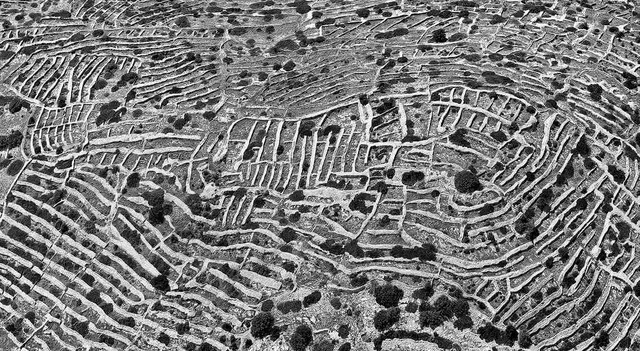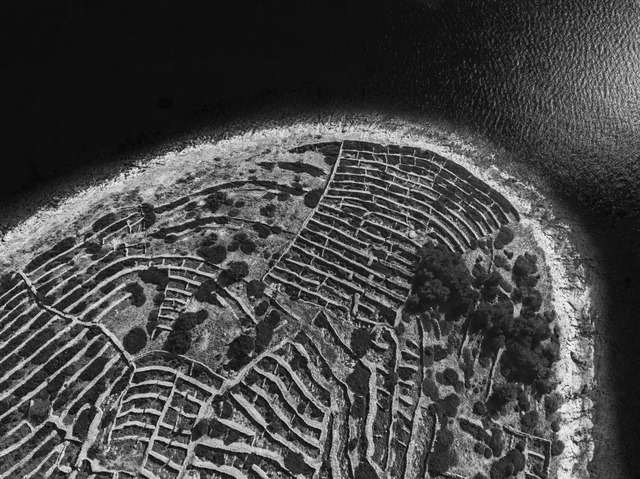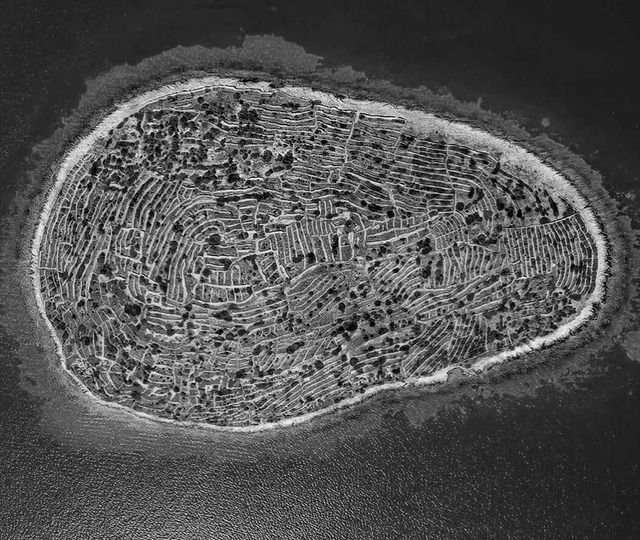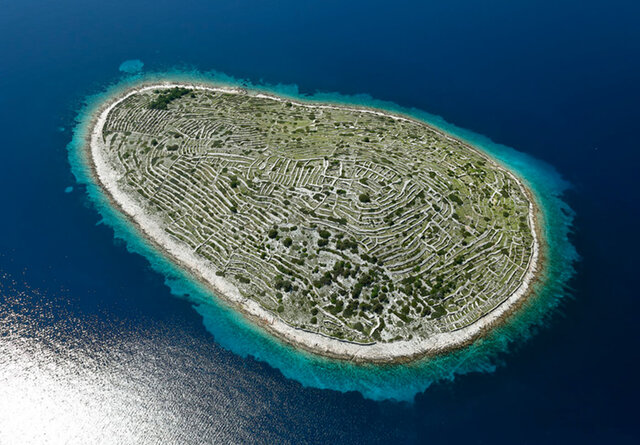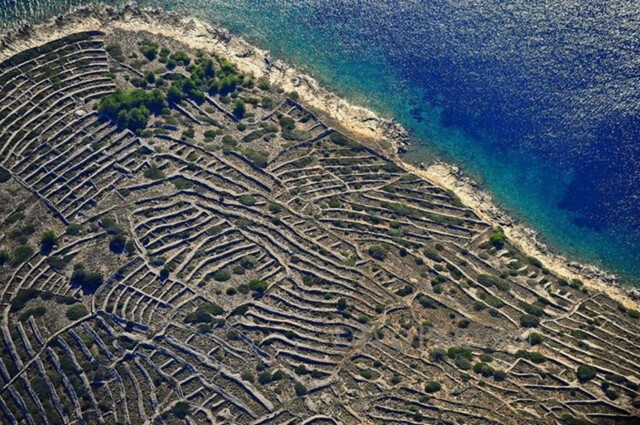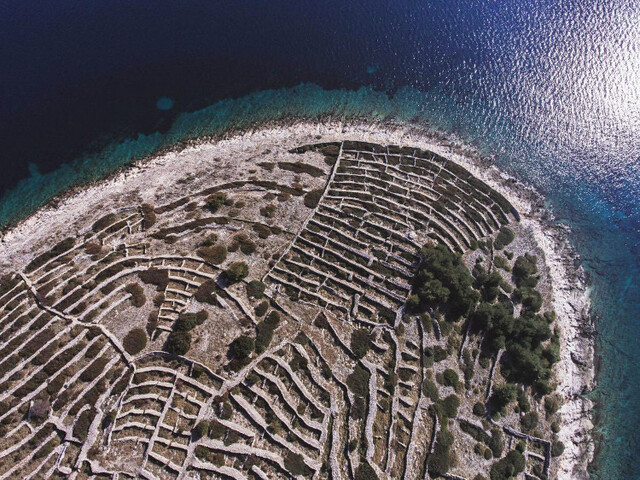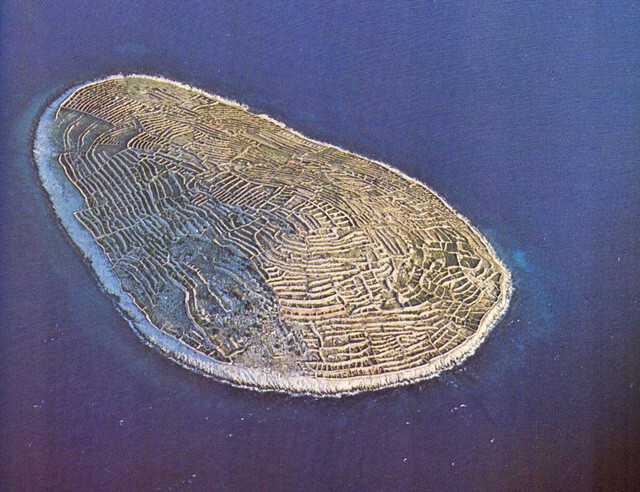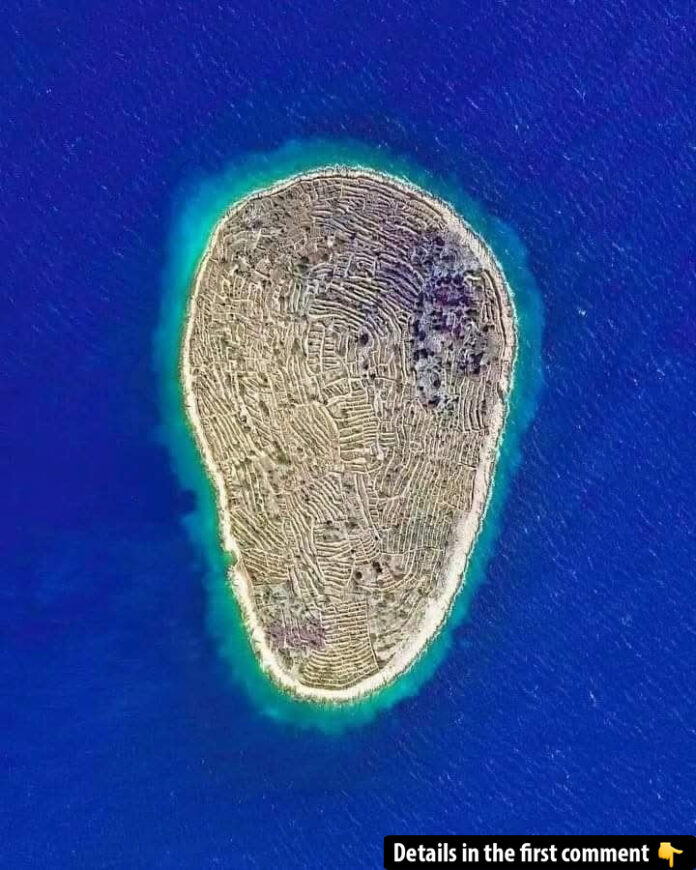Nestled in the azure waters of the Adriatic Sea, Baljenac Island is more than just a small, uninhabited landmass. From the sky, it looks like a colossal fingerprint imprinted onto the ocean. Its intricate dry-stone walls, stretching a remarkable 23 kilometers across just 0.14 square kilometers, tell a story of human ingenuity and resilience. This unique island, a member of Croatia’s Sibenik Archipelago, stands as a testament to centuries of agricultural innovation and cultural heritage.
A Natural Wonder with a Human Touch
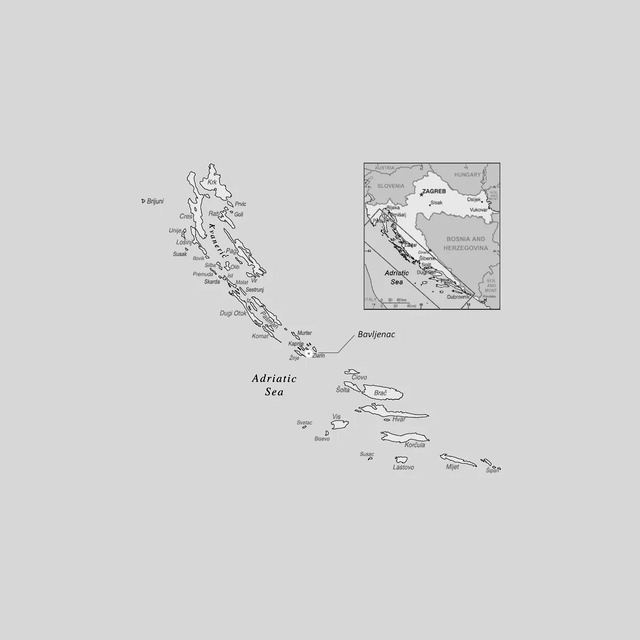
Baljenac Island, also known as Bavljenac, owes its distinctive appearance to a network of stone walls meticulously constructed by Croatian farmers over the centuries. These walls, forming a labyrinth of geometric patterns, were built not for aesthetic purposes but out of necessity. The limestone-rich terrain of the Adriatic coast, while breathtakingly beautiful, presented significant challenges for agriculture. To make the land arable, farmers removed stones from the soil and used them to create walls that defined property boundaries and protected crops from the region’s harsh winds.
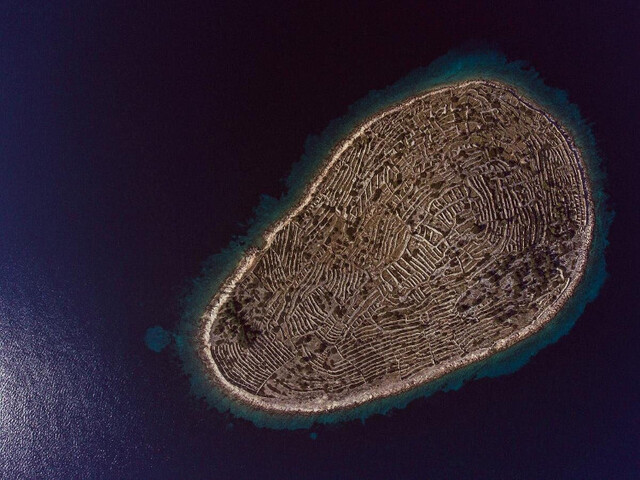
Despite its uninhabited status today, Baljenac’s intricate patterns serve as a reminder of the labor-intensive practices that shaped the landscape. Viewed from above, the island’s resemblance to a human fingerprint is both striking and symbolic—a mark left by countless generations who worked in harmony with the environment.
Video
Discover why scientists believe ‘Fingerprint Island’ used to be a vineyard – watch the video to explore the surprising history and evidence behind this fascinating theory!
The Ingenious Dry-Stone Walls
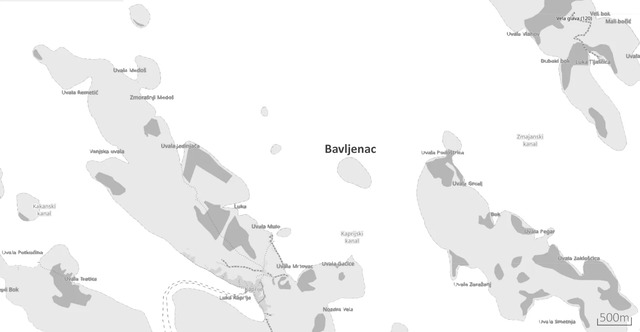
The dry-stone wall technique used on Baljenac is an example of sustainable construction at its finest. Without the use of mortar or cement, stones were carefully stacked to form robust structures that have withstood the test of time. This method, widespread across Croatia and other parts of Europe like Ireland and Scotland, exemplifies resourcefulness in overcoming the challenges posed by rocky terrain.
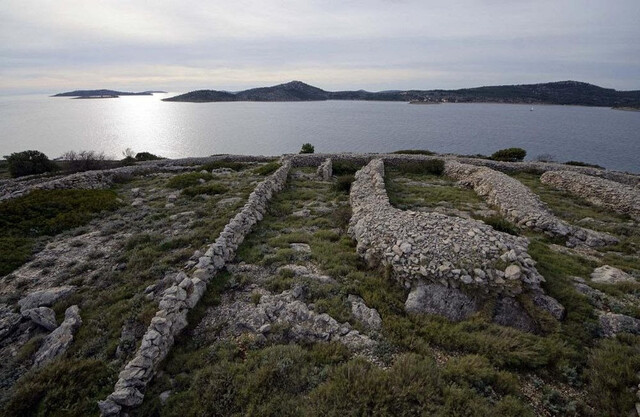
These walls are not merely functional but also cultural artifacts. Dating back primarily to the 19th century, some sections of Baljenac’s walls may have been constructed during the 16th and 17th centuries. During this period, the island, along with nearby Kaprije, served as a refuge for Christians fleeing Ottoman invasions. These walls, therefore, are not just markers of agricultural land but also silent witnesses to a turbulent history.
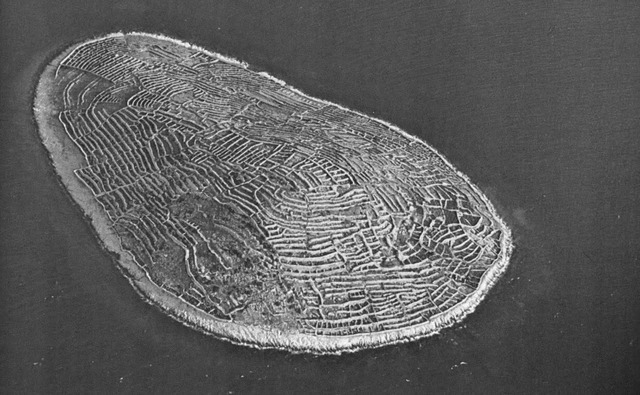
In 2018, the dry-stone wall technique was recognized as an intangible cultural heritage by UNESCO, further solidifying its importance as a global cultural treasure.
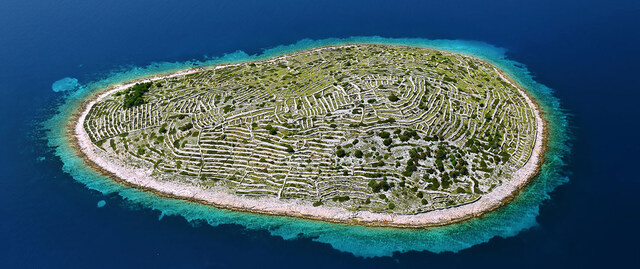
A Gem of the Sibenik Archipelago
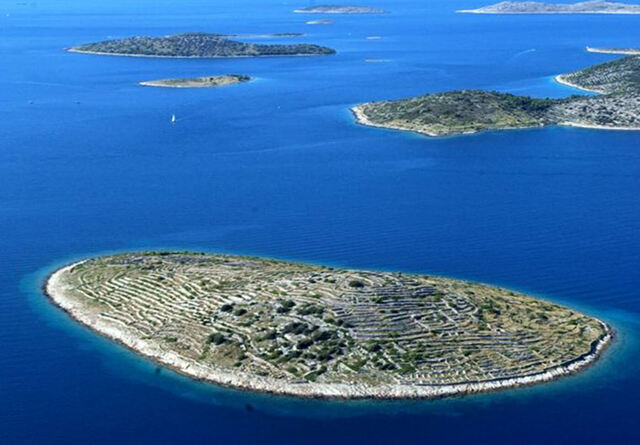
Baljenac is one of the 249 islands that form the Sibenik Archipelago, a picturesque cluster of landmasses along Croatia’s stunning Dalmatian coast. Its proximity to the historic city of Sibenik makes it a point of interest for travelers exploring the region. Despite its diminutive size, Baljenac’s density of dry-stone walls outshines its neighboring islands, including Kaprije and Zut, which also feature similar structures.
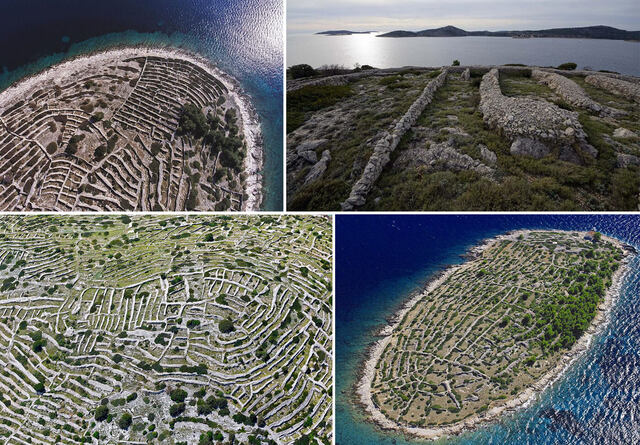
The island’s natural beauty is equally captivating. Sun-drenched and dotted with vineyards, fig trees, and citrus groves, Baljenac offers a glimpse into the idyllic Mediterranean lifestyle. Its rugged charm, coupled with the rich aroma of native plants, paints a picture of tranquility that contrasts with the hard labor once needed to shape its landscape.
Exploring Baljenac: A Unique Visitor Experience
While Baljenac itself has no port or permanent inhabitants, visitors can marvel at its beauty through boat tours that circle the island. The surrounding waters of the Adriatic provide a serene backdrop, allowing tourists to appreciate the intricate patterns of the walls and the island’s harmonious integration into its natural surroundings.
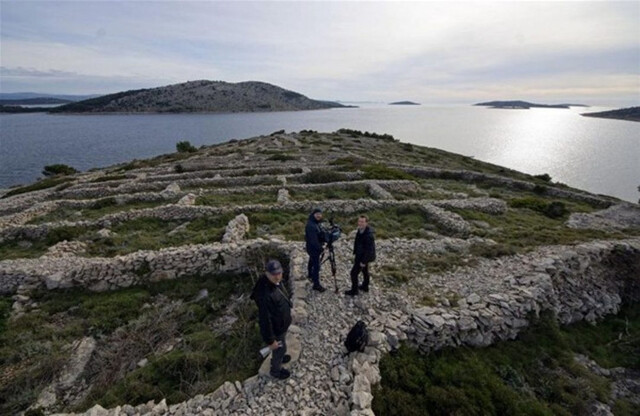
The lack of direct access to Baljenac only adds to its allure, preserving it as a pristine example of human and environmental coexistence. Nearby, the city of Sibenik serves as a gateway to the island and offers its own historic and cultural attractions, including the UNESCO-listed Cathedral of St. James and the medieval St. Michael’s Fortress.
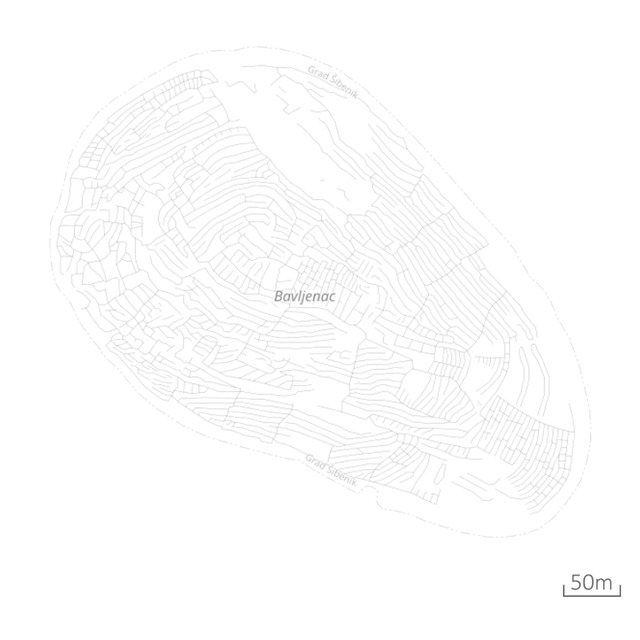
Baljenac’s Path to Global Recognition
Baljenac’s story is not just about its past but also its future. The Croatian government has been actively campaigning for the island to be designated as a UNESCO World Heritage Site. Such recognition would not only highlight Baljenac’s unique cultural and historical significance but also ensure its preservation for future generations.
The dry-stone walls of Baljenac are more than agricultural relics; they are symbols of resilience and innovation. They demonstrate how communities adapted to their environment, turning challenges into opportunities and leaving behind a legacy that continues to inspire.
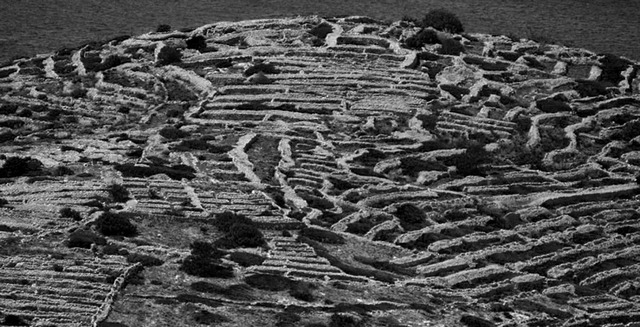
A Testament to Mediterranean Heritage
Baljenac Island is a microcosm of Mediterranean culture—its history intertwined with the natural beauty of the Adriatic. The walls, painstakingly built by farmers, stand as a tribute to human perseverance and the ingenuity required to thrive in a rugged landscape.
Today, Baljenac is more than just an island; it is a cultural monument that honors the labor and traditions of generations past. Whether admired from above for its artistic patterns or explored from afar during a tranquil boat tour, Baljenac captivates all who encounter it.
As efforts to secure its place as a UNESCO World Heritage Site continue, Baljenac serves as a reminder of the enduring connection between humanity and the land. Its dry-stone walls, etched into the earth like the lines of a fingerprint, symbolize the lasting imprint of human creativity and determination.
See more pictures of Baljenac Island
